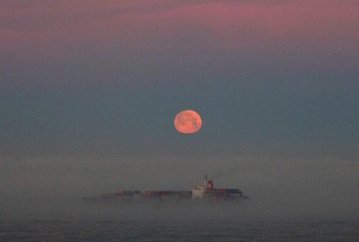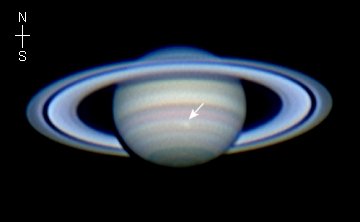 Hearts. Flowers. Heavenly fireworks. Give Spaceweather PHONE for Valentine's Day.
Hearts. Flowers. Heavenly fireworks. Give Spaceweather PHONE for Valentine's Day.
QUIET SUN: X-rays from the sun have dropped to their lowest levels since July 1997. The reason: no sunspots. Sunspots are strong sources of solar X-rays, but the sun has been mostly spotless for two weeks. No sunspots, weak X-rays, low solar activity: solar mininum has arrived.
SNOW MOON, FOG MOON: According to folklore, last night's full moon was the Snow Moon. In San Francisco--always the rebel--it was instead the Fog Moon. "I drove to the beach," says Mila Zinkova, "but the only thing I could see was fog. Well ... I live in San Francisco. Sometimes I need to drive a few hundred extra feet to find clear skies. I drove those few hundred feet and spotted the red, not round moon and a boat popping up from the mist:"

Elsewhere the Snow Moon was its usual self--more images: from Mike O'Leary of El Cajon, CA; from Chris Schur of Payson, AZ; from Dominic Cantin of Quebec, Canada; from Ginger Mayfield of Divide, CO; from Thomas Cakalic near Boise, Idaho.
STORM ON SATURN: For the third week in a row, amateur astronomers are monitoring a storm on Saturn. It's the white spot in this February 11th photo taken by Ian Sharp of Ham, West Sussex, UK:

Compared to the body and rings of Saturn, the storm seems small, but consider this--it's large enough to swallow the planet Mercury. Lately, NASA's Cassini spacecraft has been detecting crackling radio bursts of the sort you hear on your car radio when a thunderstorm is nearby. The white spot is the likely source, making it a lightning storm.
Got a backyard telescope? You can monitor Saturn yourself. Even small backyard telescope will show you Saturn's rings and clouds. Look for the planet rising in the east after sunset: sky map.

